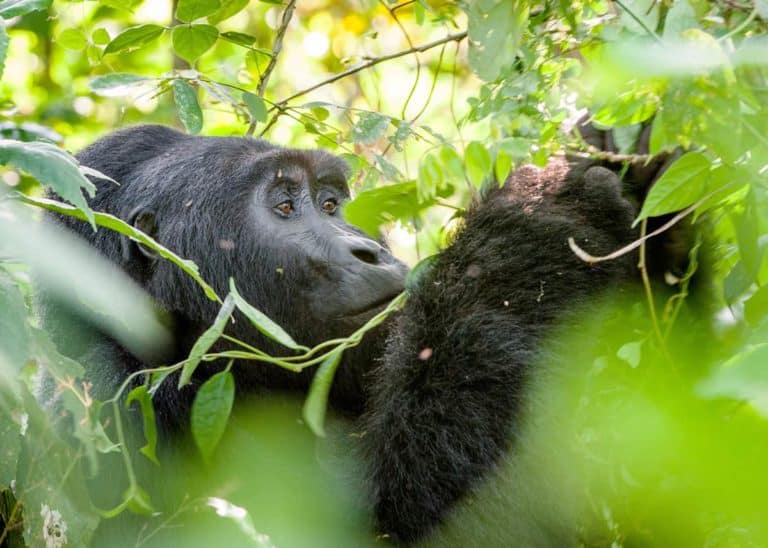African vs Asian Elephants: 14 Key Differences Compared
An elephant is an elephant, right? There are actually 3 elephant species. And the two African elephant species differs noticeably from their Asian elephant counterpart.
African vs Asian elephants differ in 14 ways. African elephants are larger, have a larger population, and reside on the African continent. Asian elephants have smaller bodies, smaller ears, and run slower.
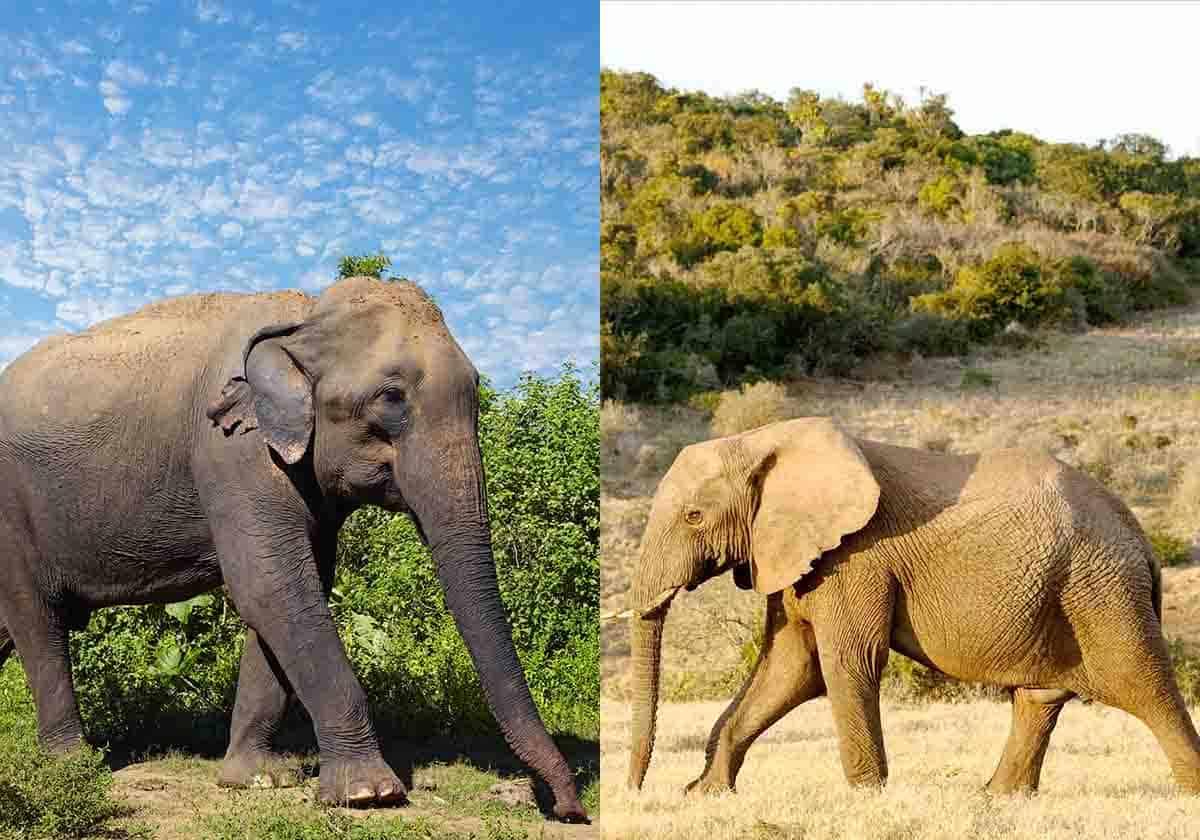
Some of the telling differences between African vs Asian elephants are easy to see.
And some take a closer examination, but these key differences make these two species distinctively different creatures.
14 Key Differences: Asian vs African Elephants
At first glance, African and Asian elephants look alike. But even a cursory look can reveal some obvious differences, and closer examination reveals other differences that aren’t readily apparent.
1. Range
Their names come from their ranges, and since Asia and Africa are thousands of miles apart, the two species never occupy the same spaces.
- Asian elephants are most common in the more southern areas of the Asian continent. These areas include the Indian subcontinent and Southeast Asia, including Borneo and Sumatra.
- African elephants live in Sub-Saharan Africa. This means they don’t transverse all of Africa but live south of the Saharan Desert. And they don’t go as far south as South Africa. Most African elephants live in Botswana but can be found in 37 African countries.
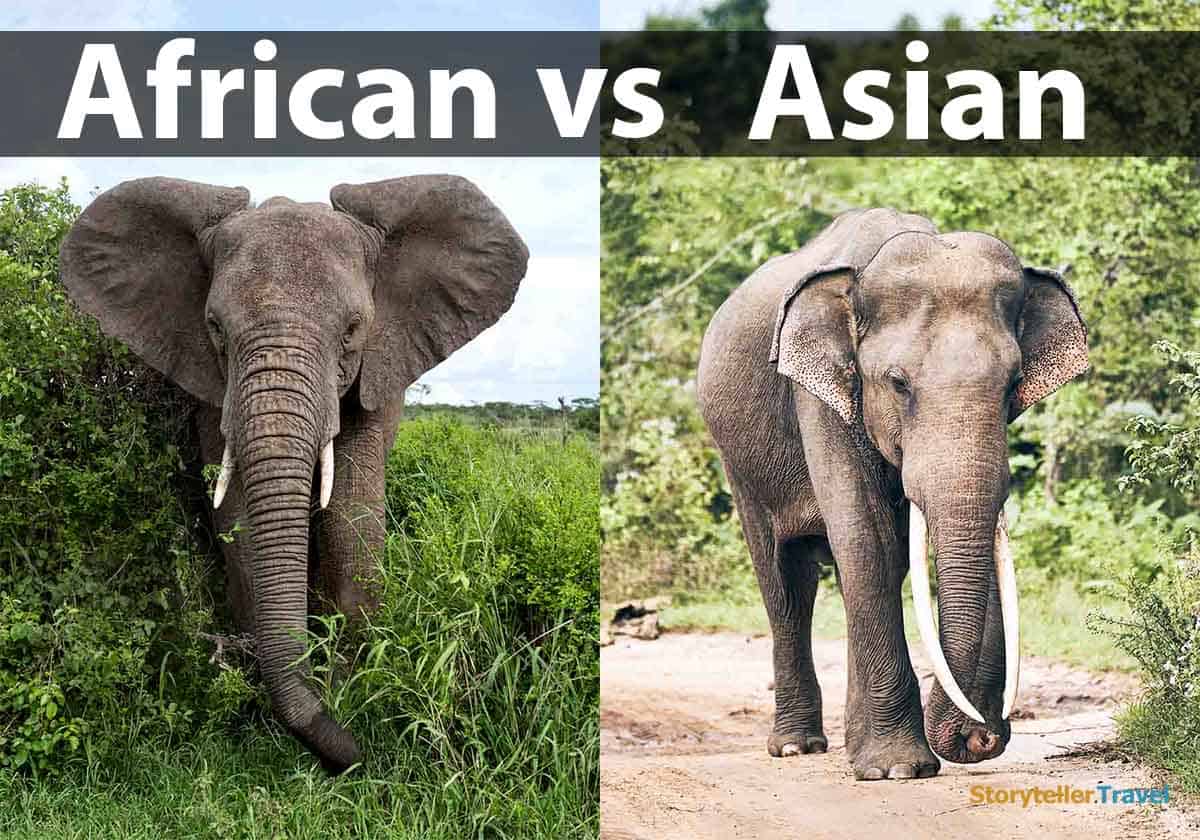
2. Size Differences: Asian vs African Elephants
Another difference between Asian vs African elephants is their sizes. Casual observers might not notice them unless compared side by side.
African elephants are the largest animals walking the Earth.
- Bull Asian elephants stand about 9 ft (2.75 m) and weigh 8,000 lb (3,625 kg). Female Asian elephants stand about 7.9 ft (2.4 m) and weigh about 5,400 lb (2,450 kg)
- Bull African elephants stand 10 to 13 ft (3.2 to 4 m) in height. And weigh between 10,300 to 13,300 lb (4,700 to 6,000 kg). Cows are smaller and lighter. Females stand an average of 8 ft (2.5m) and weigh about 5,900 lb (2,675 kg).
African elephants grow as much as 3 feet taller than Asian elephants when measured at the shoulder, and generally weigh about +2,000 lb more.
Sexual dimorphism in elephants means that size differences exist from species to species and within species. A male African elephant, called a bull, can weigh up to twice as much as a female. They are also taller than their female counterparts.
Learn more about African bush elephants.
3. Ears: African vs Asian Elephants
The most readily identifiable difference between these types of elephants is the shape of their ears. African elephants have larger ears than Asian elephants— to a significant degree.
In addition to helping them hear, elephants’ ears help them keep cool.
- Since Asian elephants live in generally cooler locales, they don’t need large ears to help them regulate their body heat. Asian elephants’ ears have a somewhat semi-circular shape., with two defined points (side and bottom).
- By contrast, African elephants live in a warmer climate, so they need bigger ears to help them stay cool. The African elephant has ears shaped roughly like the continent of Africa, which can serve as a mnemonic device to help remember the difference.
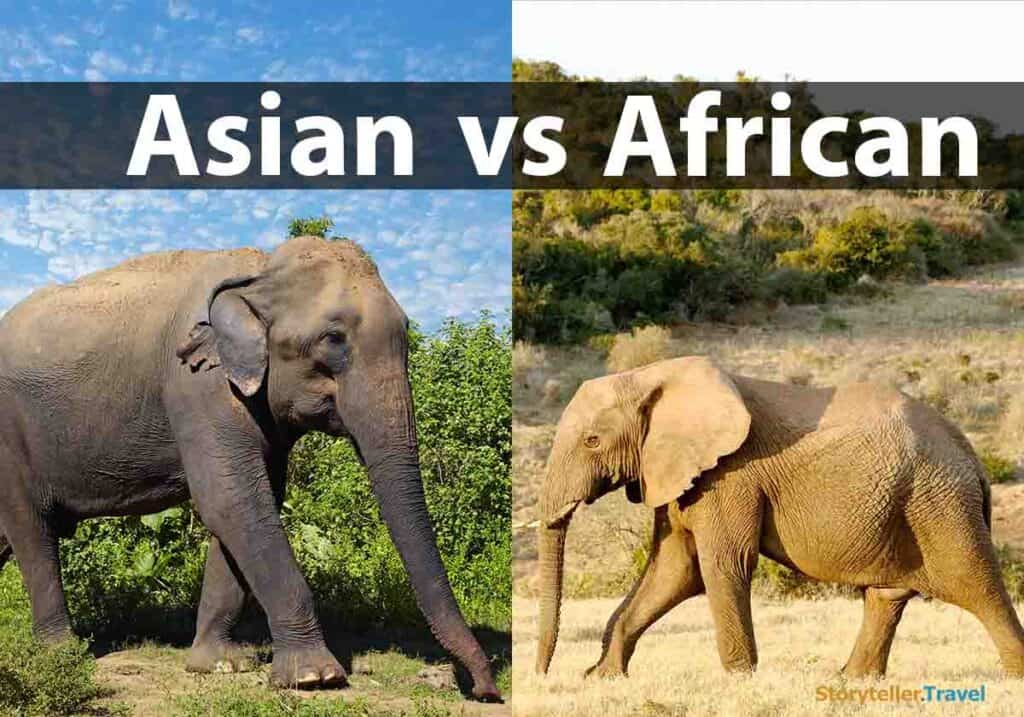
4. The Tusks
When most of us think of elephants, we think of trunks and tusks, but not every elephant has tusks.
Female Asian elephants have small, brittle structures called tushes. They look like small tusks, but they don’t have dental pulp inside of them and only grow to be a few inches long.
Male Asian elephants, as well as most African elephants of both sexes, have the tusks we imagine when conjuring mental images of elephants. They are ivory (the value of which has led to the animals’ endangered status) and can grow up to six feet (2 m), though Asian elephant tusks are somewhat shorter.
Elephants use their tusks to dig, lift things, and gather food.
5. Head Shape
The next most obvious difference is in the shape of the elephants’ heads.
- Asian elephants have a twin-dome head shape.
- African elephants have what’s known as a single-dome shape.
Since African elephants are more massive, it’s no surprise that their heads are larger than their Asian counterparts, but it’s not just a size difference. The African elephant’s head is rounded and looks like a dome.
The Asian elephant’s head resembles two dome shapes sitting side by side. Picture two wooden bowls sitting upside down and next to each other, and you can get an idea of what an Asian elephant’s head looks like.
It’s not as obvious a difference as their ears, but it’s less subtle than something like the shape of their lips.
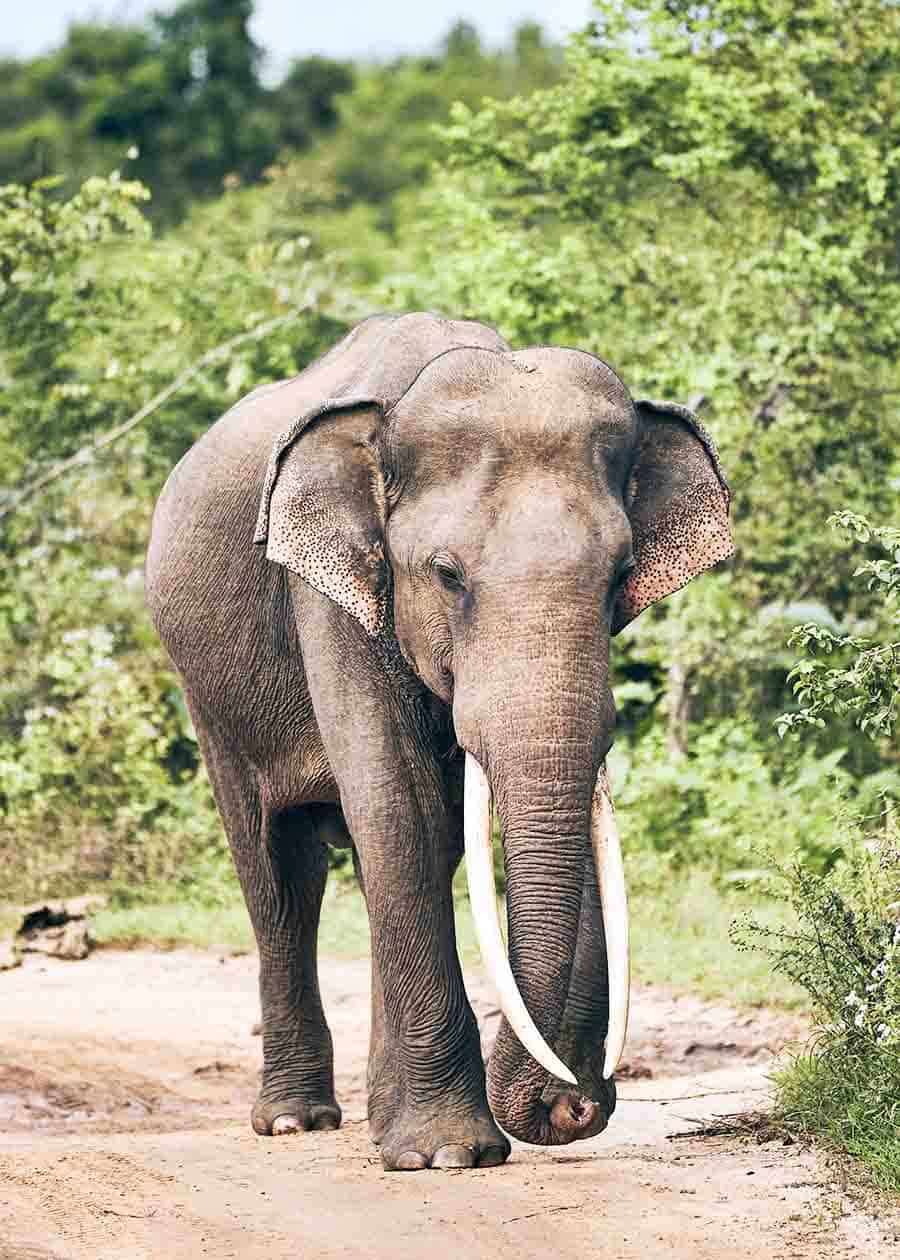
6. The Trunk
Another notable difference when comparing African vs Asian elephants is their trunk.
While both are prehensile appendages, it’s hard to imagine the two types of trunks being more different.
- The African elephant’s trunk has two appendages on the end that resemble fingers. They look like fingers and serve similar purposes, manipulating objects.
- Asian elephant trunks have one finger.
The African elephant’s trunk is softer to the touch than the Asian elephant’s, and it has more visible rings.
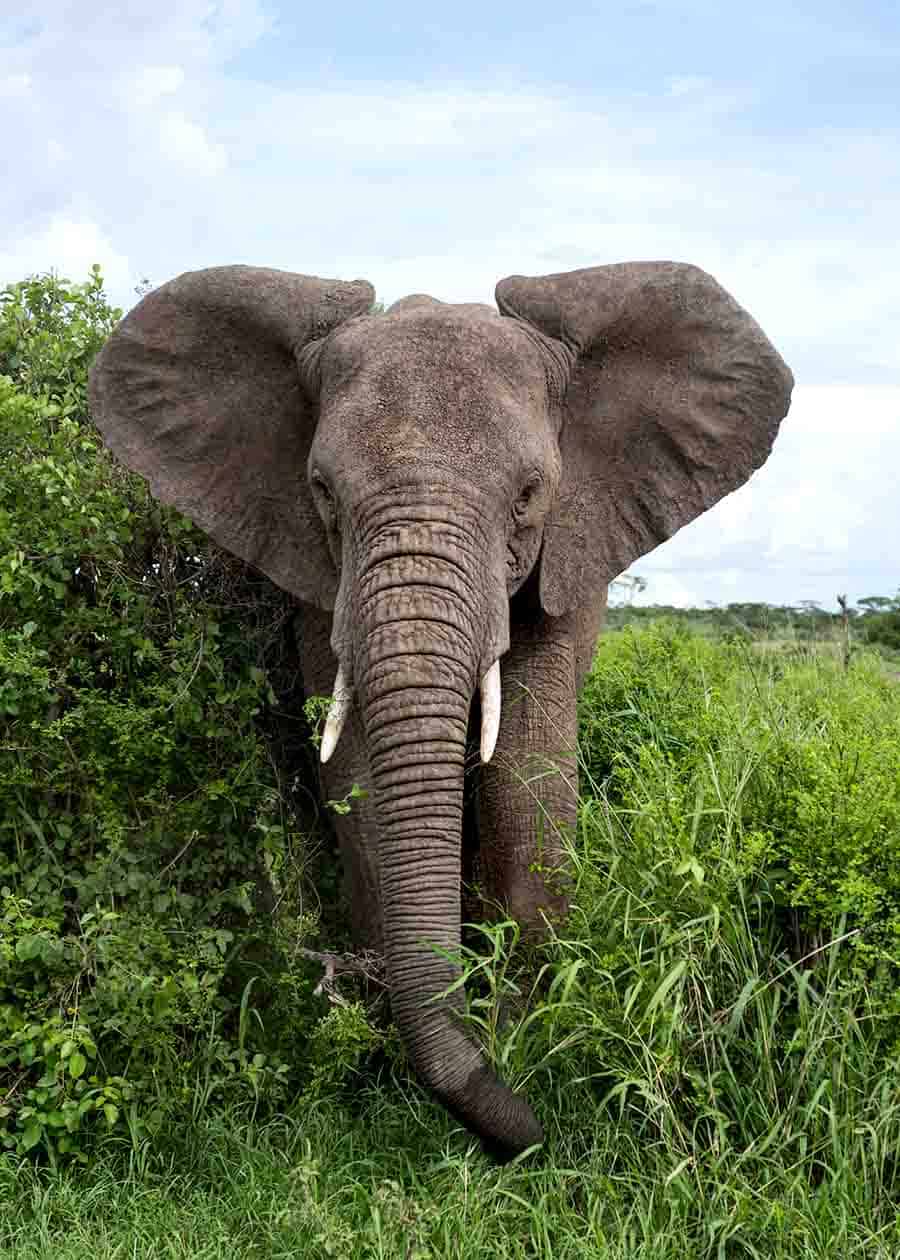
7. Their Lower Lips
Now we get into some differences that take a close examination to see.
Since few non-zoologists spend much time close enough to see elephant lips, most people don’t know of this difference.
- Asian elephants have longer lower lips that taper to a point.
- African elephants have a short, round bottom lip.
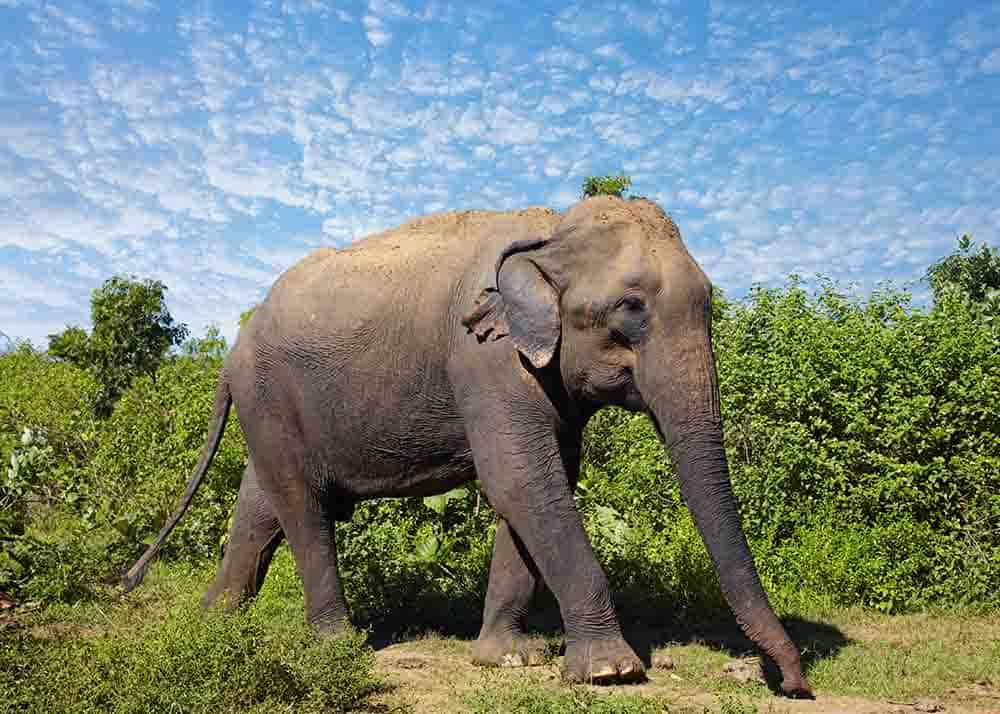
8. Teeth
The African elephant’s scientific name, Loxadonta africana, stems from the shape of its teeth.
“Loxadonta” comes from Latin, with “donta” referring to teeth and “loxa” describing a sloped or oblique shape. Their teeth loosely resemble human molars.
Asian elephant teeth are sharper and more diamond-shaped.
Both species are polyphyodonts, meaning they continually grow and replace teeth throughout their lives, like a shark.
This is a marked difference from most mammals, which are diphyodonts. Diphyodonts, grow a set of baby teeth, replace them with permanent adult teeth, and don’t grow more.
9. Skin Texture and Color
The physical difference in elephants’ ears results from adaptation to their environment. As mentioned earlier, African elephants need larger ears to help them cool themselves in a hotter habitat.
The same type of difference in the elephants’ skin exists.
- African elephants have skin that is wrinklier than Asian elephants. These extra wrinkles retain small amounts of water, another cooling method their bodies have evolved.
- Since Asian elephants live in cooler climates than the African savannah, they do not require extra cooling mechanisms, so their skin is smoother since it doesn’t need to hold water.
Asian elephants are also darker. African elephants’ lighter-colored skin is an adaptation to their propensity to spend time in direct sunlight, where darker skin would make them hotter.
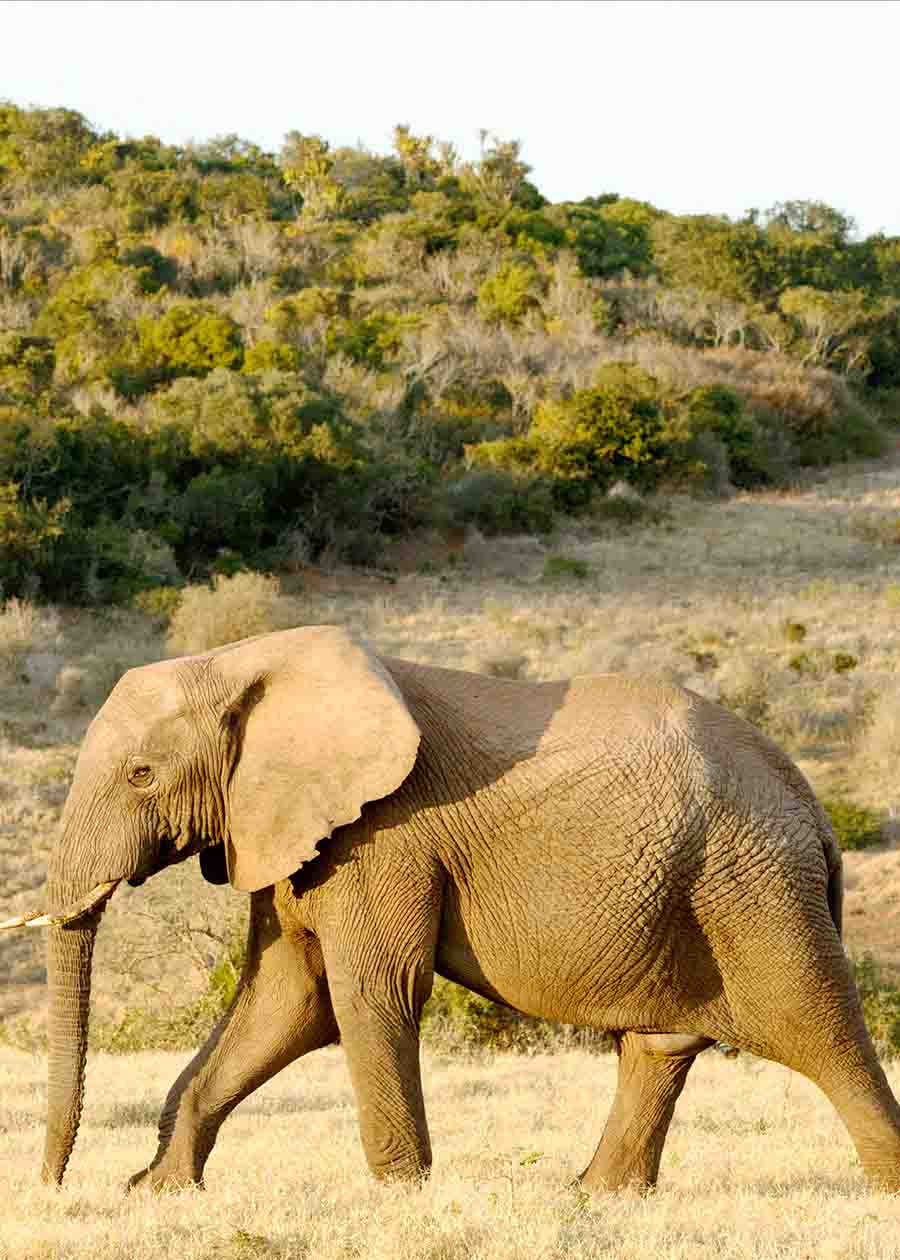
10. Toenails
We might think of the elephant foot as a tree-trunk-like structure, but both species have five toes on each of their four feet.
Most elephants have 18 toenails, though the African bush elephant, a subvariant of the African elephant, has 16 toenails. Instead of four toenails on their back feet, they have three.
11. The Ribcage
This difference would take a skeletal exam, or at least palpating the animal’s side, to notice.
But it’s a logical one: with larger mass, African elephants usually have one more pair of ribs than Asian elephants— up to 42 individual ribs protecting the heart and lungs.
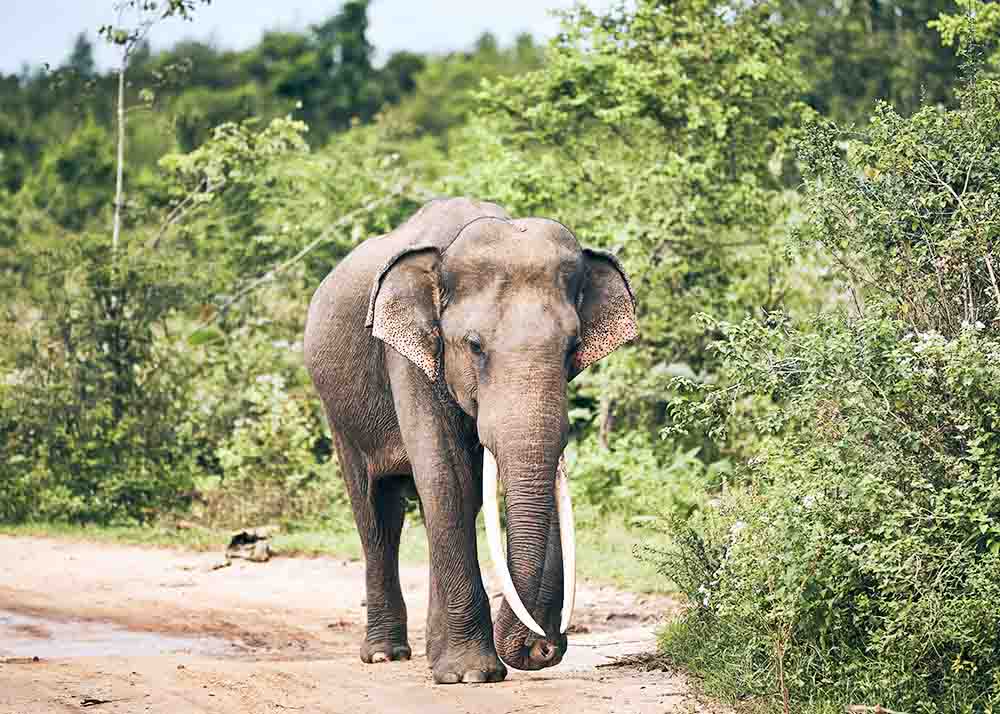
12. Lifespan: Asian vs African Elephants
The lifespans of both types of elephants are very similar. Asian elephants live longer in captivity and African elephants live longer in the wild.
- Asian elephants live an average of 48 years in the wild and just 19 years in captivity.
- African elephants can live up to 70 years or more in the wild. In a zoo, an African elephant lives an average of 17 years. Some will even die within a few years of arriving.
The elephant is the longest-living land mammal other than humans.
Here’s more about how long elephants live.
13. Diet: African vs Asian Elephants
Both elephant types are herbivores.
- Asian elephants often stick to grasses, sugarcane, and bananas.
- African elephants tend to be more aggressive eaters. They will pull up young trees and devour foliage, fruit, and bark.
Here’s more about what elephants eat.
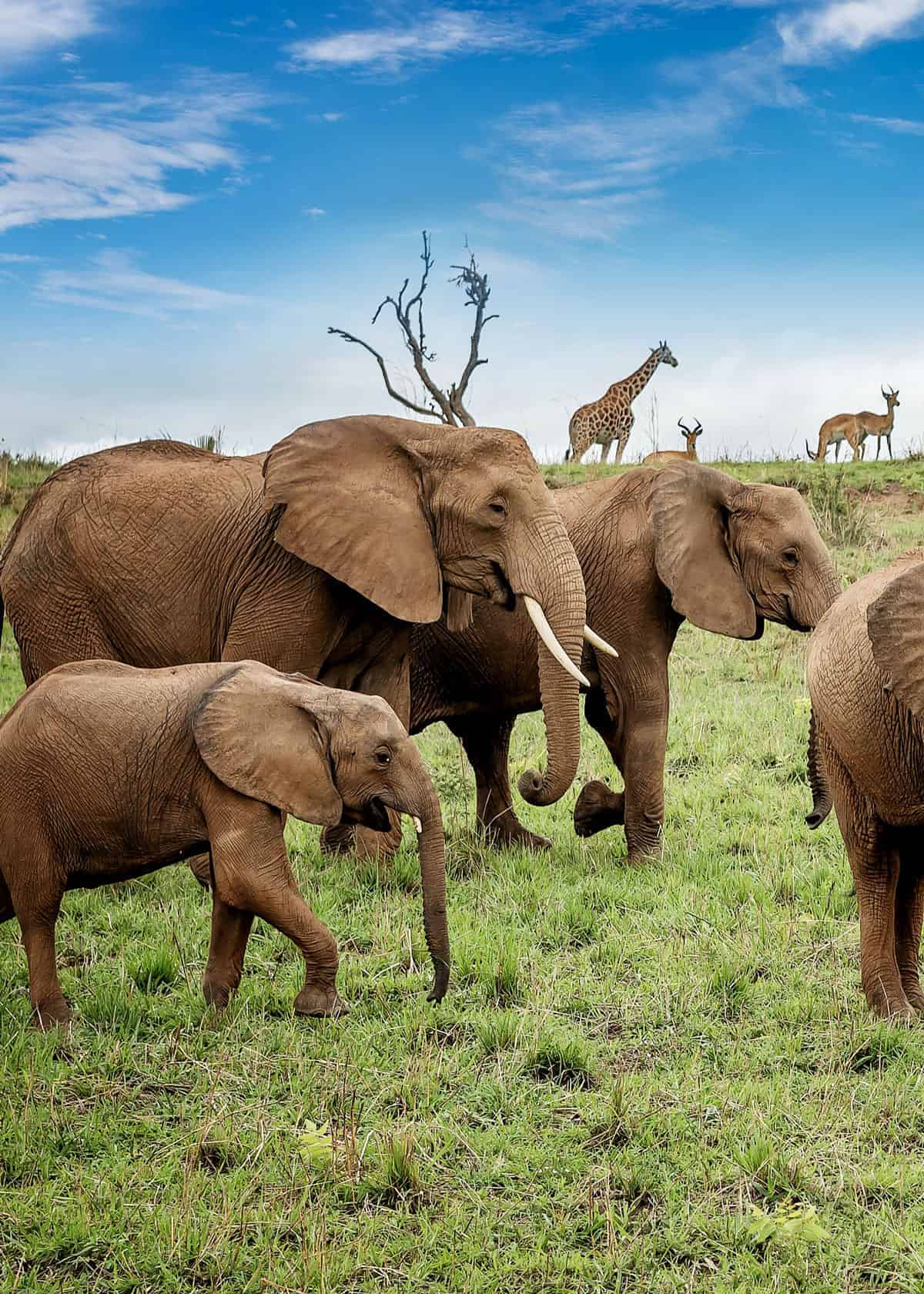
14. Speed: African vs Asian Elephants
You might be surprised that the lighter elephant actually runs slower.
- Asian Elephant: 15 mph (24 km/h). While slower than the African elephant, running at 15 mph is equivalent to a 4-minute mile. This is much faster than the average human can sustain.
- African Elephant: 25 mph (40 km/h). The bush elephant runs slightly faster than the forest elephant. But if you’re being chased, the slight speed difference doesn’t matter. Both can run faster than a human.
Here’s more about elephant speed.
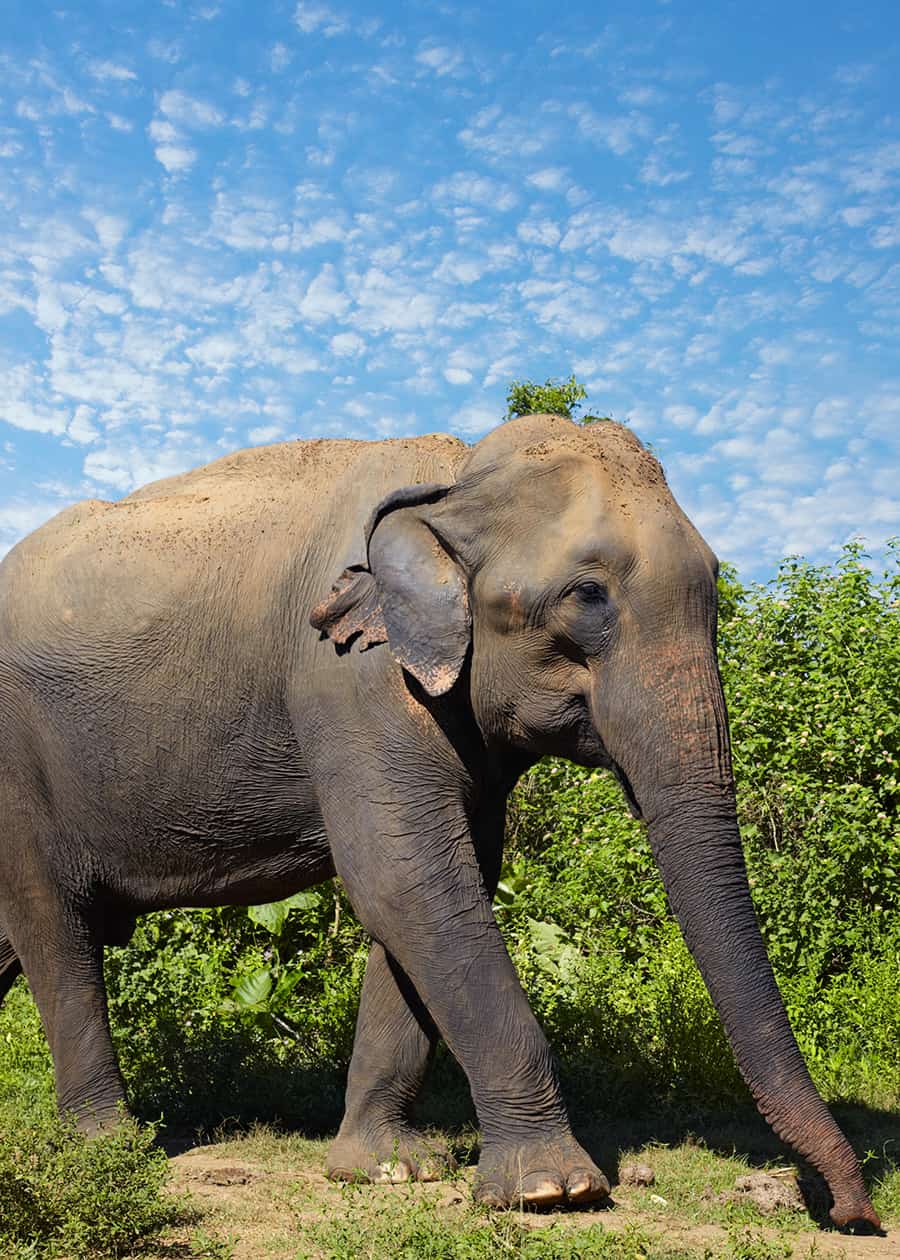
Final Thoughts
While there are many differences between African vs Asian elephants, one thing these magnificent creatures have in common is their endangered status. While there are more African than Asian elephants, both species are endangered.
Scientists and others work to fight poachers and thwart their efforts, but the threat to elephants is ongoing.






